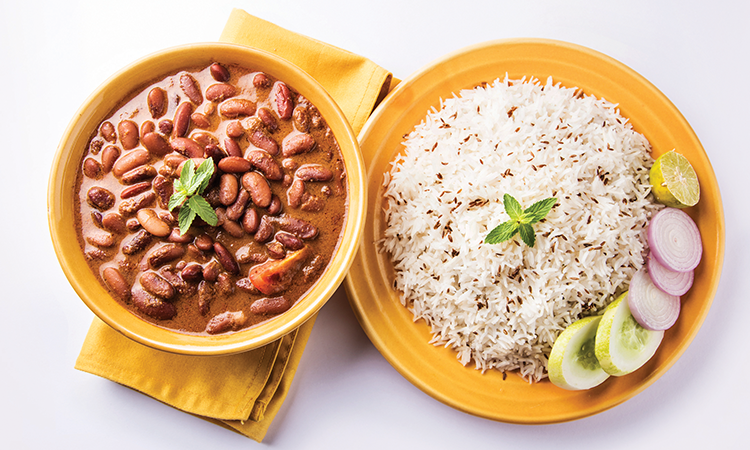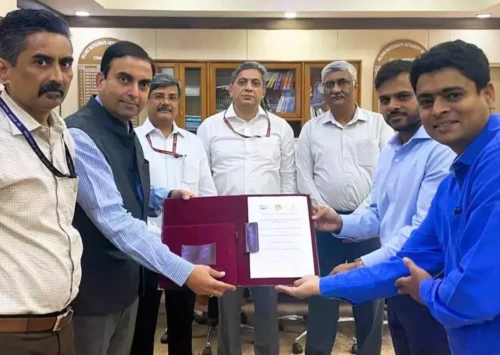Signature Dishes of India
India & You
September-October 2017
Rajma chawal, a predominant dish in north India, is so famous that it has various iterations in each of the states comprising the north. We take a look at what makes this dish so satisfying that everyone wants a mouthful.
At the famous Connaught Place in the Indian capital, New Delhi, a food vendor daily has a crowd gather in front of his small shop, especially during lunch hours. Office goers, shoppers, college students, etc., come here to get themselves a plate of rajma chawal or red kidney beans and rice. The vendor also throws some chopped onions on the plate, as that is the most common way of enjoying the dish. Mildly spiced mango pickle is another accompaniment.
Relished across various north Indian states, the preparation of rajma chawal differs with regions and households. In New Delhi, for instance, it is mostly prepared as a gravy with onions and tomatoes and varying spice quotient. While some prefer to keep it mild, most generally don’t shy away from making a rich curry. In the neighbouring state of Punjab, where the added spices usually remain high and the gravy – a luscious red, spoonful of ghee or clarified butter are also added to make the eating experience luxurious. A few hundred kilometres from Punjab and further north, in Himachal Pradesh, more ingredients and thus flavours, come into play. There is the gravy of tomatoes and onions, there are spices and there is ghee – but what makes a preparation of traditional Himachali rajma different is the addition of tamarind and curd. Madra, as the dish is called, is rich in spices that are mellowed down by curd or sometimes, raisins. The flavour from tamarind is also what sets it apart from other versions of the dish. Further north in Jammu & Kashmir, cooking styles strike a common note, with curd being a shared ingredient in rajma’s prepared in Jammu. “Rajma chawal is a staple diet here. Rajma, is in fact, grown in abundance here; the best one comes from a town called Bhadrawah,” a native of Jammu, Sumit Singh Jamwal tells India&You. Surprisingly, conventions are a little different in Kashmir, which is a colder region unlike Jammu. “Rajma does not make for a primary diet in Kashmir but rice does and that’s how rajma comes to use,” shares Ahmad Mukhtiyar from Kashmir. “Preparation style is also different here. While in Jammu, the gravy remains thick and with curd; we keep it thin and add turnips or meat to it instead. In another style of preparation, we mash rajma to prepare a dish called gass dun, which has a comparatively thicker gravy,” Mukhtiyar explains.
But while consumption of rajma remains dominant in these states, elsewhere in other north Indian states like Rajasthan, Uttarakhand or Uttar Pradesh, it is consumed only occasionally and does not constitute for a traditional meal, despite chawal or rice being a staple.
Rajma is also consumed with roti or Indian bread, but it is heartily enjoyed with chawal, making rajma chawal a popular dish. But, while most enjoy it on a daily basis, they rarely ponder about its origins.
The roots of rajma
Well known across India, the roots of rajma are intrinsically not Indian. Rajma was introduced to India by the Portuguese who brought it from the ‘new world’ along with other food items and goods. Otherwise a popular ingredient for Mexican dishes, rajma easily made its space in Indian kitchens as it could be prepared just like other lentils. In fact, “The initial preparation of soaking and boiling rajma, and adding a few spices is adapted from Mexican recipes,” shares Sachin Bansal, founder of India Food Trails, a company that conducts food walks across India.
On the menu of most Indian restaurants, even in states where it does not make for a regular diet item, rajma chawal continues to be consumed in traditional fashion with only minor changes in different regions, which are mostly influenced by the preparation style of local dishes from that particular state. With a dash of sugar in one state to the addition of kadi patta (curry leaves) elsewhere, rajma may be found with some local twists pan India but never without a plate of chawal.










